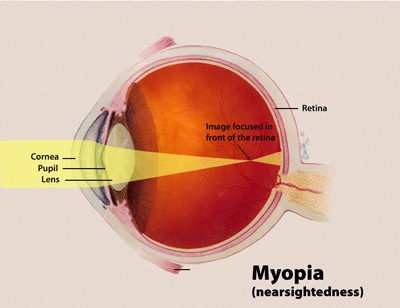Have you or someone you know experienced a persisting headache that didn’t go away even after taking painkillers? If you were from a Chinese family like mine, perhaps the first remedy would be the suggestion of Acupuncture: the practice of penetrating skin on certain areas of the body with needles to “heal” physical pains and ailments. For over thousands of years, the Chinese have been using this method to treat pains, allergies, paralysis, asthma and many other illnesses.
A sterile needle used in Acupuncture (lengths may vary). No drugs are introduced into the body. Source: Wikimedia Commons
As a victim of these needles, I had wondered, how could pricking one’s body with very fine needles provide relief of ailments? Could science be used to explain this treatment? First, let’s look at the basic concepts of this practice.
Qi and the Meridians
Acupuncture practitioners believe that aches and pains are a result of blockage or irregular flow of Qi (pronounced “chee”): life energy that flows throughout the body of all living things. This “Qi” flows throughout the body via pathways or Meridians, which are known to reach tissues of the skin, muscles, bones, joints and organs. Unlike the conventional needles used for giving shots, acupuncture needles are very thin and do not puncture or damage tissues. Inserting these needles in certain areas (known as pressure points) of the meridians unblock or assist the proper flow of Qi, ultimately relieving the individual of ailments.
Outline of the different meridians in the body.
Source: Wikimedia Commons
Seems pretty far-fetched right? The idea of fixing the flow of “magical life energy” inside one’s body isn’t exactly convincing to scientists and especially those who hate needles. However, a large abundance of testimonials, reviews and research articles have repeatedly claimed the effectiveness of acupuncture and this in fact, has garnered the interest of many western doctors and researchers.
A Scientific Approach
In an attempt to provide a scientific explanation for the effects of acupuncture, researchers have studied the impact of needle insertions on the brain using fMRI. It was found that triggering certain pressure points decreased the activity in structures of the brain involved with pain sensation, with no negative effects on other areas of the brain.
In addition, several studies have also discovered the correspondence between pressure points and nerve bundles or muscles within the body. For example, an individual having a heart attack will experience pain running from their chest to the length of their left arm. Coincidentally, this pathway is associated with what acupuncture practitioners know as the “heart meridian”. One study finds the stimulation of this area to affect heart rate and areas of the brain associated with cardiac muscle regulation.
Although many doubts still remain about the evidence behind acupuncture treatments, interest in this practice has become increasingly popular, with more and more evidence supporting the effectiveness of these needle insertions.
Check out the video below for more information on Acupuncture
– Grace Lam






